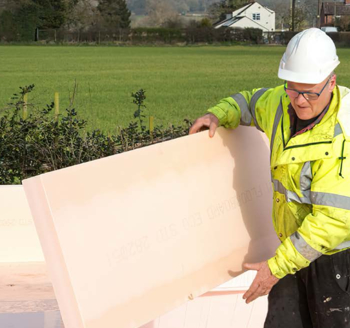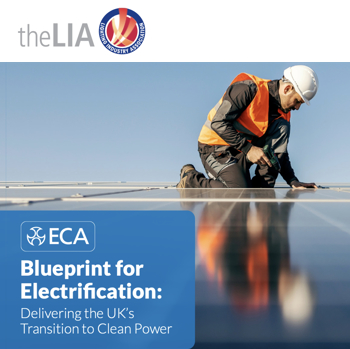Owner
In very broad terms, an 'owner' is a person or organisation who has the rightful title to something such as property, i.e. the property belongs to them.
In the construction industry, the term 'owner' typically refers to the person or organisation that owns a built asset (such as a building, bridge, tunnel, etc.) or land. But it may also refer to ownership of the components of a project. This can be important, for example, in determining whether a ownership of a component lies with a supplier or whether it has transferred to the client.
Project 13, an Institution of Civil Engineers (ICE) - led initiative to boost certainty and productivity in the delivery of infrastructure, defines an infrastructure owner as:
| The organisation that owns and operates the infrastructure, promotes the investment in the infrastructure programme, receives the completed facilities and puts them into operation. In the case of creating a completely new network the owner role can be created in parallel with the development of the programme. For example, in large infrastructure programmes such as the Olympic and Paralympic Games the London Legacy Development Corporation was created. The role of the owner will include the individual or organisation called the ‘Sponsor’. |
The term may also refer to a person or organisation that 'owns' (or is responsible for) a project or part of a project.
For example, on publicly-funded projects, the senior responsible owner (SRO) (sometimes referred to as the 'project owner') is the individual responsible for the success of the project:
| ...responsible for ensuring that a programme of change or a project meets its objectives and delivers the projected benefits. The SRO should be the owner of the overall business change that is being supported by the project and should ensure that the change maintains its business focus, has clear authority and that the context, including risks, is actively managed. This individual must be senior and must take personal responsibility for successful delivery of the project. They should be recognised as the owner throughout the organisation. |
(Ref. Achieving Excellence Guide 2 - Project Organisation.)
When the owner of a building also resides in it, they are referred to as the ‘owner occupier’.
A homeowner is a person who owns a home, whether an apartment or house.
NB the English Heritage, Heritage at Risk Register list the following ownership categories:
- Charity
- Commercial company
- Commercial company, multiple owners
- Crown
- Local authority
- Local authority, multiple owners
- Mixed, multiple owners
- Other not for profit group
- Private
- Educational (independent)
- Educational (state sector)
- English Heritage
- Government or agency
- Health authority
- Historic England
- Private, multiple owners
- Religious organisation
- Trust
- Unknown
- Utility
[edit] Related articles on Designing Buildings Wiki
- Certificate of ownership
- Client.
- Customer.
- Forest ownership
- Home owner.
- Home ownership
- Infrastructure investor.
- Integrator.
- Land registry.
- Off site materials.
- Owner occupier.
- Potential owner.
- Privity of title.
- Project 13.
- Project sponsor.
- Property ownership
- Property.
- Retention of title in construction.
- Senior responsible owner.
- Shared ownership
- Stamp duty land tax.
- The rise of multiple property ownership in Britain.
- Title.
- Vesting certificate.
Featured articles and news
Cooling centres and cool spaces
Managing extreme heat in cities by directing the public to places for heat stress relief and water sources.
Winter gardens: A brief history and warm variations
Extending the season with glass in different forms and terms.
Restoring Great Yarmouth's Winter Gardens
Transforming one of the least sustainable constructions imaginable.
Construction Skills Mission Board launch sector drive
Newly formed government and industry collaboration set strategy for recruiting an additional 100,000 construction workers a year.
New Architects Code comes into effect in September 2025
ARB Architects Code of Conduct and Practice available with ongoing consultation regarding guidance.
Welsh Skills Body (Medr) launches ambitious plan
The new skills body brings together funding and regulation of tertiary education and research for the devolved nation.
Paul Gandy FCIOB announced as next CIOB President
Former Tilbury Douglas CEO takes helm.
UK Infrastructure: A 10 Year Strategy. In brief with reactions
With the National Infrastructure and Service Transformation Authority (NISTA).
Ebenezer Howard: inventor of the garden city. Book review.
The Grenfell Tower fire, eight years on
A time to pause and reflect as Dubai tower block fire reported just before anniversary.
Airtightness Topic Guide BSRIA TG 27/2025
Explaining the basics of airtightness, what it is, why it's important, when it's required and how it's carried out.
Construction contract awards hit lowest point of 2025
Plummeting for second consecutive month, intensifying concerns for housing and infrastructure goals.
Understanding Mental Health in the Built Environment 2025
Examining the state of mental health in construction, shedding light on levels of stress, anxiety and depression.
The benefits of engaging with insulation manufacturers
When considering ground floor constructions.
Lighting Industry endorses Blueprint for Electrification
The Lighting Industry Association fully supports the ECA Blueprint as a timely, urgent call to action.




















